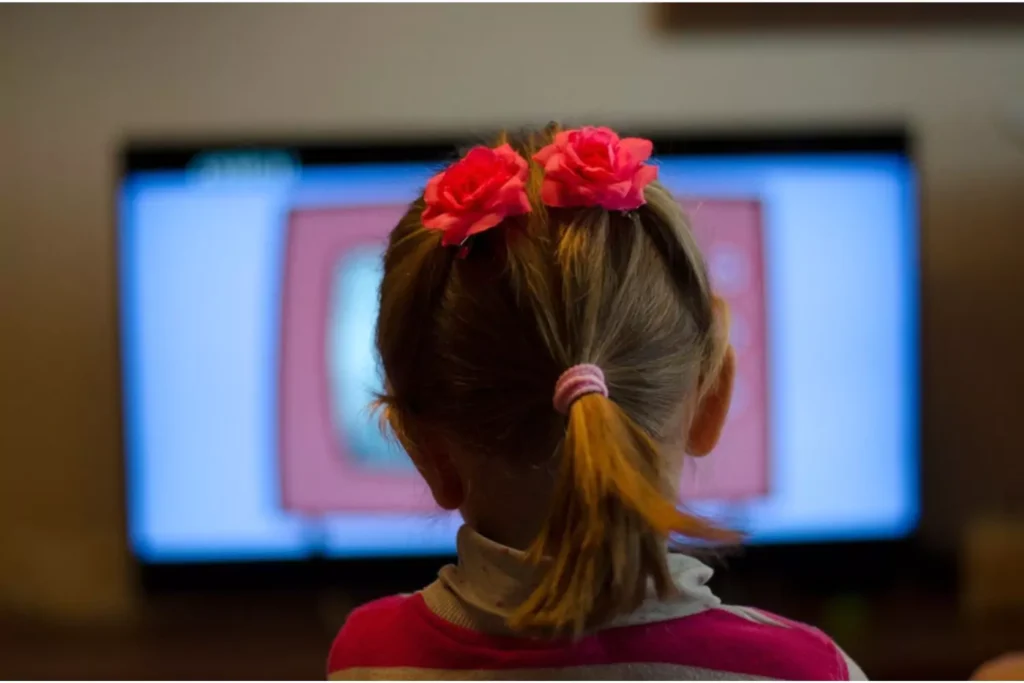
Teens Exposed To Pornography
Equip your teen to deal with the temptation and peer pressure related to pornography.

The news can often terrify children. As a parent, you can help your kids sort through news stories they might see on TV.
Estimated reading time: 6 minutes
Watching the news these days can feel pretty overwhelming.
Those who still get their news from a televised news broadcast (as opposed to online articles or videos) might witness smartphone footage of extreme violence. Even local news often involves dramatic stories about homicides or kidnappings, among other things. These are stories made all the more disturbing when pictures of creepy mugshots flash on the screen.
One moment you’re watching two smiling TV news anchors chatting about the weather; the next moment, graphic, violent images pass before your eyes.
These stories can be hard for us to process as adults. Now consider all of these unsettling images from a small child’s perspective. Pictures like these can be terrifying for children in the room. Their natural thought might be, “Am I going to die from these things too?” Worry, anxiety and even depression could follow those thoughts.
But here’s some good news: As a parent, you can help your kids sort through the news stories they might see on TV.
I’ve spent the last 25 years in broadcast journalism, doing just about every job you can do in the newsroom. That gives me a perspective and insight into how news stations craft their shows, which can be helpful for parents to know about.
The most dramatic stories of the day — and sometimes the most disturbing — are usually featured first in a newscast. When a tragic news story is unfolding live, especially if it affects many people, TV producers know you can’t look away.
The more dramatic or devastating a story is, the more time a news broadcast will devote to it. This includes stories like violent protests, alleged police brutality, school shootings, or devastating weather. The 24/7 cable news channels cover these stories all day long in pretty much every show. Sometimes this includes the political opinion shows.
As time goes on within a half-hour network or local newscast, you’ll notice that the stories become less violent and dramatic. Instead, producers will replace them with feel-good human-interest segments, weather, sports, and a lighthearted kicker story rounding things off at the end. They call it that because it can be kicked if the newscast is too long or if breaking news demands more attention.
Tip #1: The first part of the newscast is when you or your kids are most likely to see the scariest images on TV. You might have heard the news saying, “If it bleeds, it leads.” And that’s still as true today as ever. This means so-called hard news stories with the most violent images will run at the top of the half-hour. And even if you’re not paying super-close attention, the headlines tease at the beginning of a local show tells viewers exactly what’s coming up in the first segment of a newscast.
The more dramatic a story, the more likely we are to see difficult images re-aired over multiple newscasts. Whether it’s a terrorist attack, a natural disaster, or even something like images of doctors and nurses treating sick or injured patients, you’ll see certain footage time and time again.
Adults naturally know that stations are re-airing this kind of footage. But kids don’t. During 9/11, kids thought planes kept hitting the buildings.
Tip #2: The next time your younger child sees a news story repeated, explain that the news people just want as many people as possible to know what happened. Then, explain that the bad thing in this particular story only happened one time, not two or more times.
If young children lack the ability to understand exactly what’s going on, older kids have a different problem. Teens and young adults often interpret the news based on their emotions rather than logic or even facts.
As kids get older, they begin to understand what’s going on it the news and they may struggle with a lack of control and can feel helpless.
Tip #3: Help your older children process their emotions after a difficult story. You might ask your older kids open-ended questions, such as “What did you think about the story?” or “What really impacted you in the news you just saw?”
Those sorts of questions build relationship. They give you an insight into how your kids are processing the news they see. Over time, you’ll be able to identify emotional patterns in the way your kids interact with the news. Also, encourage them to be open and tell someone they trust when something they see on the news bothers them. If a story makes them feel helpless, encourage them to tell you about it. Then you may want to pray together for the people who are hurting so far away.
The news has all the drama of TV shows and movies. The people who produce the news are masters in knowing what grabs attention. They use lights, cameras, sound, graphics, and pictures to draw emotion out of the viewer.
Their goal?
Getting you to watch, night after night.
The more people watch, the higher the stations can set their advertising rates. Stations set their rates following the sweeps months of November, February, May and July. During these times, the news will be at its most sensational. The channel with the highest viewership gets to set the highest rates in that TV market.
That’s why newscasters work hard to amp up the drama — especially during those times — to draw you in. Interviewees might cry over their situation in a news report and sometimes news reporters may even cry on camera.
At times, those emotions are genuine. Still, news footage like that can also be a deliberate editorial choice to keep us hooked as viewers.
But kids, especially younger ones, don’t know that. Depending on the developmental level of the child, seeing the emotion of other people can deeply affect some children. It isn’t until they develop more emotional skills themselves that they can handle seeing other people who are grief-stricken — or develop the discernment to understand the bigger context of the story they’re hearing.
Tip #4: It’s important for parents to help children understand why the news is presented the way it is. Children might naturally believe it’s just about delivering facts and information objectively. But putting on a good news “show” is also a “business.”
Watching the news with your kids doesn’t have to be discouraging. When done together, with discernment, wisdom, and critical thinking, watching the news together can be an opportunity to help your children learn about the world.
A fitting Bible verse to keep in mind as you contemplate which stories will be helpful and which will be hurtful for your child is Philippians 4:8: “Finally, brothers and sisters, whatever is true, whatever is noble, whatever is right, whatever is pure, whatever is lovely, whatever is admirable — if anything is excellent or praiseworthy — think about such things.”
Parents seeking help for kids who’ve experienced trauma can get help through Focus on the Family’s Christian Counselor’s Network. Call 1-800-A Family or visiting our parenting website.